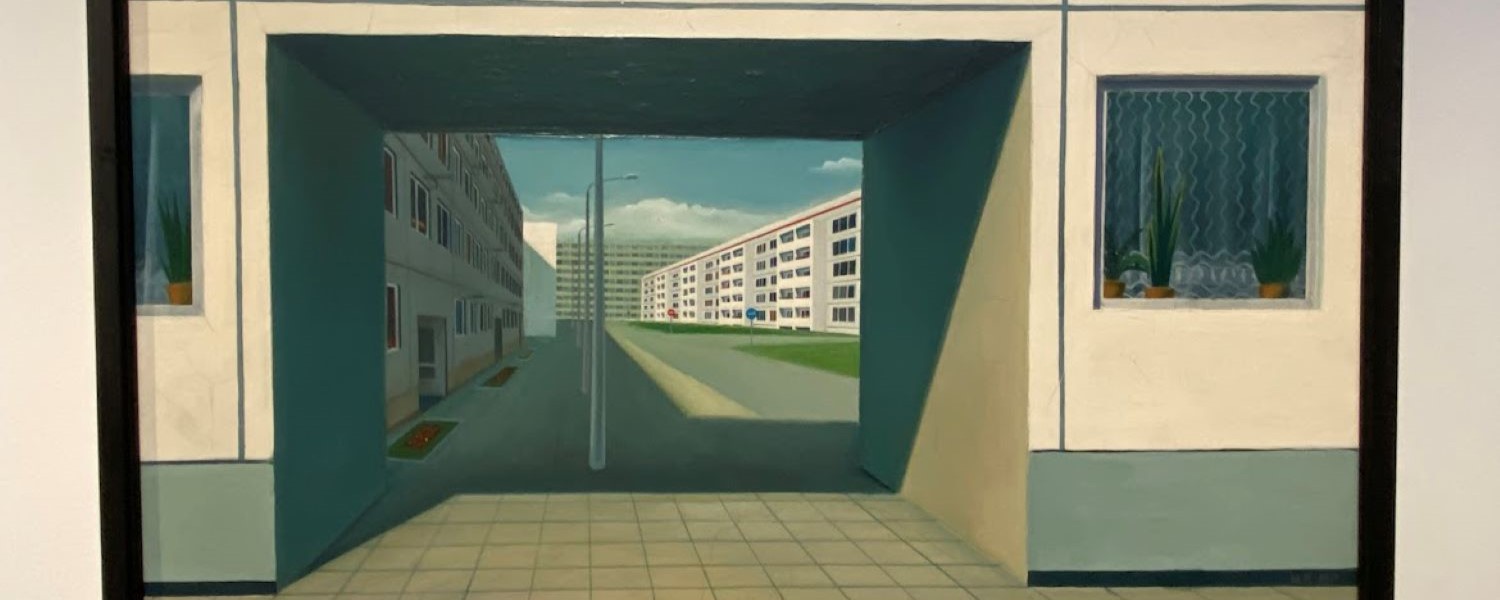“Cities have the capability of providing something for everybody, only because, and only when, they are created by everybody.” (Jane Jacobs, The death and life of great American cities, 1961)
by Morwen Johnson
Last week’s devastating fire in Glasgow School of Art showed the emotional attachment which communities can feel for buildings. The affection felt for the ‘Mack’ wasn’t solely because of its A-listed status or historic value, it was because the building was part of the fabric of the city and many people over the years have been touched by it.
At the time the news of the fire broke, I was at a lunchtime talk arranged by Architecture and Design Scotland on the value of street art within regeneration. This latest discussion in the ‘This Friday Presents…’series, featured Ali Smith from Art Pistol on some of the street art projects they have managed in Glasgow.
Street art can be controversial and misunderstood, but many cities have turned it to their own advantage and built it into regeneration and tourism strategies.
Helsinki is now well-known for its legal graffiti walls and creative atmosphere but five years ago the city was still implementing a ‘zero tolerance’ approach to graffiti. Their ‘24 hour’ policy meant that stickers, posters and graffiti were removed as soon as they appeared.
Other cities which are famous for developing an enlightened (or pragmatic) approach to street art include Los Angeles, Berlin, New York and London. And Bristol has its Festival of Street Art, which attracts 30,000 visitors.
It seems that street art’s potential in Glasgow remains untapped, despite the city’s artistic reputation. Art Pistol have facilitated the creation of a number of murals in run-down locations and we were given a quick virtual tour of some of them. Many of the murals have been instigated to help deal with problem sites.
Ali noted that every wall is different, both logistically and creatively. Underpasses are often perceived as negative urban spaces, with pedestrians fearful of using them. Introducing better lighting and murals or other artwork, gives a sense that the space is managed and cared for.
Other projects have been created with the involvement of the local community – primary school children provided ideas which led to a new ‘big cat’ mural brightening up Maryhill.
Ali highlighted many of the issues which need to be addressed when managing the creation of any major street art project, including practicalities such as access issues and road closures, as well as engaging with local residents and businesses. Property owners are becoming more receptive to the idea of street art, but it can be a long process to get a project off the ground.
And if you are wondering why we should bother, he summarised why street art is important. It can:
- stimulate economic regeneration
- reinforce community identity and deliver distinctiveness
- establish more attractive destinations
- encourage ownership of the places we live
- provide landmarks
- attract positive media attention
- discourage vandalism or random tagging, and reduce clean-up bills.
Research by Carnegie UK Trust in 2012 suggested a strong link between environmental damage (graffiti, vandalism, rubbish and litter) and lower levels of wellbeing. It also showed that those living in deprived urban neighbourhoods are more likely to experience these problems than others.
Glasgow City Council apparently spends over £540,000 a year removing illegal graffiti. A new approach, providing more legal walls and engaging with the next generation of children and young people to help transform their local environments, may ultimately save councils money.
And recognising the beauty possible within urban environments, whether it’s a painted wall or an architectural masterpiece by Charles Rennie Mackintosh, reminds us that we are active participants in the places we live and work. Our experience of physical space can be changed over time – opening our eyes and minds to art can be the first step.
Further resources (please note you must be a member of the Information Service to view journal articles):
In January we published a briefing exploring different approaches to tackling the issue of derelict building and sites. It can be requested here.
Culture, creativity and regeneration in Bristol: three stories
World class streets: remaking New York City’s public realm
Urban scrawl (council approaches to graffiti), IN Local Government Executive, Apr-May 2013, pp10-11
Take back your city with paint (2012 TED talk by Edi Rama)
Pride in place: tackling environmental incivilities – local environmental problems and wellbeing
Use art to turn the world inside out (2011 TED talk by JR)
Share
Related Posts
Tackling geographical inequalities is critical for ensuring that all parts of the country have the potential to prosper. When the UK was a member of the European Union, it was entitled to a share of funding from the EU’s structural ....
By Ian Babelon A new-old concept for proximity “Are we there yet?” Parents may patiently nod to their children’s insistent nudges on a 20-minute journey to… somewhere. Quite rightly, researchers have asked: twenty minutes to what? The answer may well ....
By Ian Babelon In the first part of two blog posts, published on 22 May, Ian Babelon provided examples of good practice in retrofitting social housing. The second part of this blog post looks at estate-wide and area-wide social housing ....

